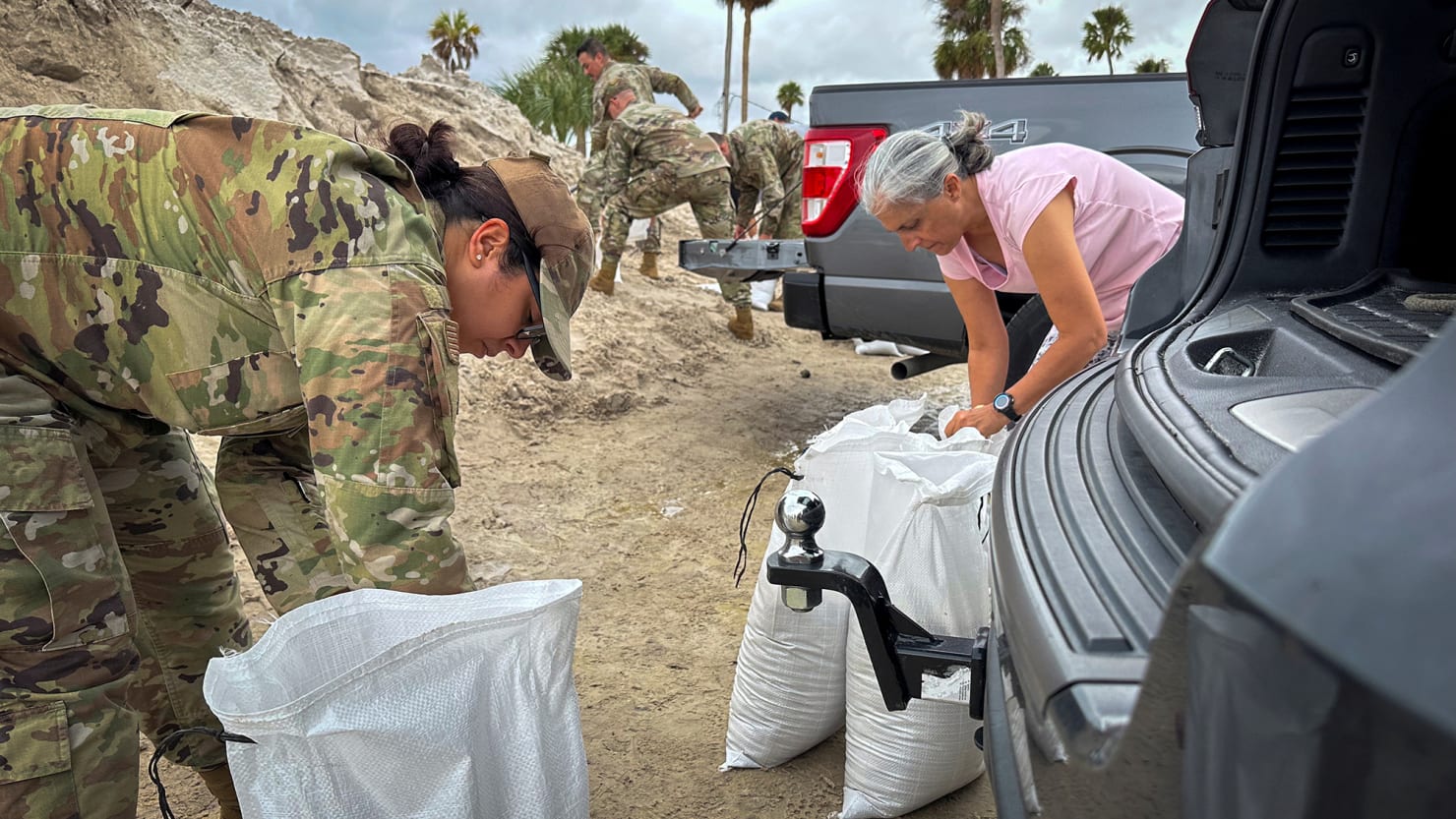As Hurricane Milton churns eastward in the Gulf of Mexico, so too do the stomachs of Tampa Bay’s three million residents.
That’s because Milton, again a Category 5 storm as of Tuesday evening, is on a crash course with Florida’s seldom-struck west coast that stands to see Tampa Bay’s lone trauma center inundated and unable to accept patients, its famous white-sand beaches washed away, and hundreds of its bridges rendered impassable.
At least, that’s what local officials in the region warned two decades ago in a worst-case-scenario simulation of a storm that’d cripple Tampa and nearby coastal communities—a hypothetical hurricane that bears chilling similarities to Milton, down to their final paths and month of arrival.
That hypothetical cyclone, dubbed “Hurricane Phoenix,” was produced by the Tampa Bay Regional Planning Council in 2010—complete with hyper-realistic news footage of how the storm would forever change the fabric of Tampa Bay as a region.
That report, along with a follow-up in 2020, explained that St. Petersburg—a city of 261,000 and home to the Tampa Bay Rays—would no longer be part of the Pinellas County peninsula, but would become an island in itself. Beaches like Clearwater and Treasure Island, also boons to the area’s tourism, would be “essentially gone.” Between 27 and 43 percent of area fire stations, hospitals, police stations, and schools would be damaged with many declared non-functional. Electricity would be out for months, and full recovery could take as long as a decade.
The storm would likely come in October, the projection said, when more hurricanes make their way into the Gulf of Mexico and turn north—like Hurricane Helene did at the end of September. Phoenix’s hypothetical landfall saw it enter the region from the west, bringing deadly storm surge into Tampa Bay that flooded downtown Tampa skyscrapers with flood waters 26 feet above typical tide levels, blew out windows, and decimated multi-million dollar waterfront homes.
Fast forward to today and Tampa’s nightmare appears to be on the precipice of becoming reality, with some caveats.
The National Hurricane Center’s earliest predictions on Milton’s path have remained largely the same, with Tampa Bay and Sarasota both appearing in its cone of uncertainty. Evacuations were ordered early in coastal areas and tens of thousands, if not more, heeding that call and piling onto interstates and clogged back roads to reach safer ground to both the north and south.
Those evacuation efforts have made Hurricane Phoenix’s horrifying projection of 30,000 Floridians being unaccounted after landfall feel like a stretch. Milton is also not expected to be a Category 5 hurricane when it makes landfall, as Phoenix hypothetically was, with wind shear expected to weaken Milton down to a still-dangerous Category 3 or 4 storm. The region’s only trauma center, Tampa General Hospital, is on an island in one of the city’s most flood-prone areas. Under the project’s estimation, Phoenix would lead to flooding up to the facility’s second floor. But Tampa General has since invested heavily in keeping its doors open in a storm, which included the purchase of an “aquafence” that can handle surge up to 15 feet—the very amount the National Hurricane Center projects it might receive on Wednesday night.

An AquaFence flood wall can stop storm surge up to 15 feet at Tampa General Hospital, the region’s lone trauma center.
Bryan R. Smith/Getty Images
Everything else about the pair of storms appears to be chillingly similar. Tampa City Manager Jane Castor didn’t mince her words when communicating this to residents Monday night.
“This is literally catastrophic and I can say without any dramatization whatsoever: If you choose to stay in one of those evacuation areas, you are going to die,” she said Monday on CNN.
Phil Klotzbach, of Colorado State University’s prestigious hurricane research team, echoed Castor’s warning in an email to the Daily Beast.
“There is a high level of potential that Tampa Bay will get 10-15 feet of storm surge,” he said Tuesday evening. “In that case, many of the barrier islands will be submerged, so yeah, if you’re in a mandatory evacuation zone, life is going to be quite harrowing (if you survive!) for you tomorrow night/Thursday morning.”
Klotzbach added that storm surge estimates for Milton are “sobering” and suggested that wind shear ahead of landfall very well could be a lifesaver for those who did not evacuate their coastal homes.
“Thank God Milton isn’t making landfall in Florida at its current intensity,” he said.
Federal meteorologists haven’t been quite as on the nose as Castor in their advisories, released every three hours, but the warnings for Milton have become increasingly ominous as it barrels down on Tampa Bay—a region known as Florida’s most vulnerable to flooding. It has miraculously avoided a direct strike from a major hurricane for more than 100 years—with the last coming in 1921.

The potential storm surge flooding projections for Tampa Bay as of Tuesday morning.
The Daily Beast/NOAA
Tampa was still a relatively new city the last time a major storm struck, selling itself as a tropical paradise as it tried to outgrow its status as a tourist hub for cigars and citrus. That hurricane arrived largely without warning, killing eight, splitting a barrier island in two, and, like Project Phoenix estimates may happen again, turning St. Petersburg into its own island.
There was an influx in migration to Tampa and the rest of Florida in the 1920s—something not all that different from what Tampa has experienced again in recent years. The city, which sits adjacent to a bay with a river cutting through its downtown, had a population boom during the COVID-19 pandemic as people sought it out, in part, because of its immaculate sunshine-to-devastating-hurricanes ratio, said Stephen Strader, a hazards geographer and professor at Villanova University.
“If this storm makes landfall in Florida, it’s more than likely going to be a billion-dollar disaster because of the development on the coast,” Strader told The Washington Post. “That area has had a huge boom and part of what’s driving it has been the lack of hurricane activity—people get lulled into a sense of safety. Developers let their guard down a little.”
Other experts have concurred of Milton’s potential to wreck the region’s economy and those of coastal communities nationwide. Bradley Schurman, a researcher and author who studies the intersection of climate and the economy, called Milton’s arrival time and path a “perfect storm” for economic catastrophe.
“A perfect storm is brewing for the Florida housing market,” he told the Daily Beast. “Properties along the coast are losing value, insurance prices are increasing (they’ve more than doubled over three years), and older adults on fixed incomes are starting to default. Milton’s impact will be felt across Florida and coastal areas across this country.”











